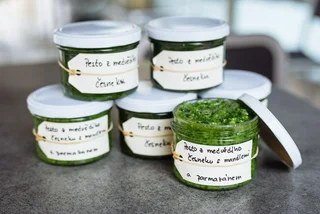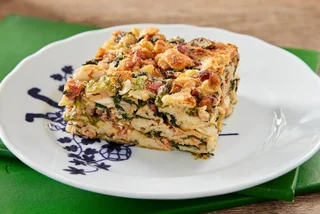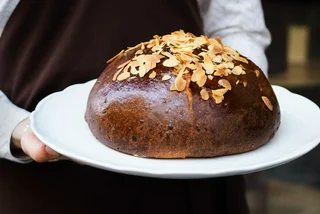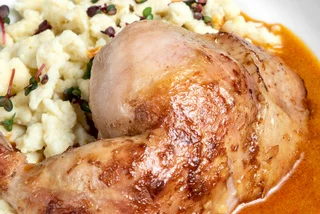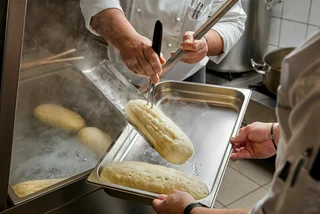No other crop that grows in the Czech fields is as demanding to grow as asparagus. How is the annual harvest carried out? We talked to the Czech Republic's largest supplier of asparagus who provided interesting facts about the country's production of this spring delight. We've also got pro tips from Ambiente chefs on how to get the most out of this precious seasonal treasure.
Grown in Czechia, savored worldwide
The Czech Asparagus Company is the only large asparagus producer in the country, harvesting up to 300 tons of crispy stalks a year. Several varieties of green and white asparagus, which are in demand all over the world, are grown on 180 hectares of land in the municipality of Hostín u Vojkovic.
"Asparagus is a hardy plant and can survive even in difficult conditions. Aspartic acid (known in Czech as kyselina asparagová) protects it from weeds and pests, and also causes the typical taste of the vegetable and the smell of urine after eating asparagus dishes," says Jiří Šafář, co-founder of the Czech Asparagus Company. “Aspartic acid also protects the plants from fungi," he adds.
Czech asparagus was grown in Hostín up until the end of World War II and then discontinued. It started growing there again in the 1990s thanks to the Dutch, who successfully exported it abroad, while the Czechs bought inferior asparagus that was imported. In 2012, a Dutch company took over the Czech Asparagus Company, and the chřesťanství, a movement for unique asparagus from Hostín, was founded.
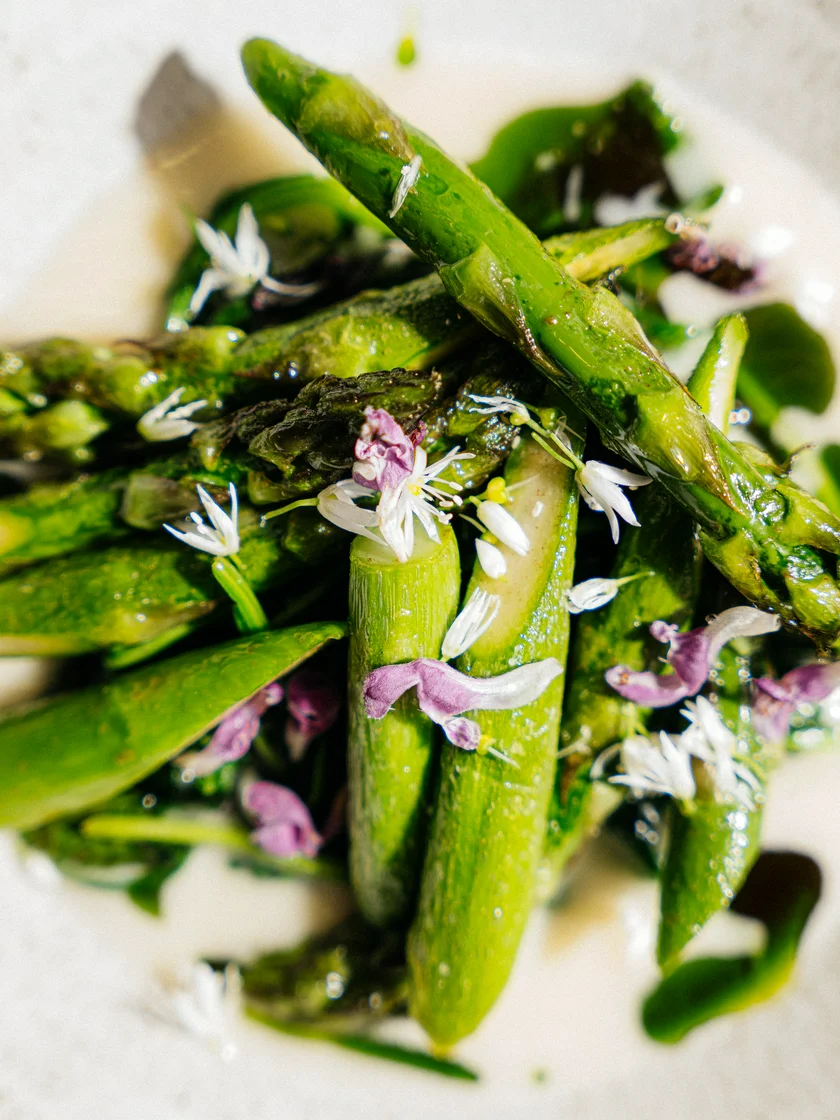
"We had to wait three years for the first harvest because the seedlings need time. We let the young asparagus plants 'starve' for two years so that they can nourish themselves deeper in the ground and thus gain better immunity," says Šafář, leading us between the wide rows where the plants have plenty of space. Each one only produces about twenty shoots a year; can you imagine how many have to be planted around Hostín?
A dark mystery
White asparagus, unlike green asparagus, ripens underground and is also harvested when covered, with a special knife called a “long knife” (dloubákem in Czech). When exposed to light, photosynthesis takes place in the stems and the asparagus changes color. Within half an hour it takes on a purple tinge, and when grown above ground it turns green. However, the white and green varieties differ not only in color but also in taste.
“In order to get asparagus, we must first uncover the white and black sheets, which either cool or warm the soil, and thus regulate the growing conditions. But we run the risk of the asparagus growing too fast, getting a temperature shock, and turning bitter," says Šafář.
"The asparagus from Hostín is considered one of the sweetest in the world. The asparagus's unique flavor is also influenced by its cooler climate and slow growth," says Šafář. However, spring vegetables do not benefit from temperatures below 15 degrees Celsius, as asparagus contains more than 90 percent water, which would freeze and tear the stems at lower temperatures.
The stalks grow 8 centimeters in one day and must be harvested as quickly as possible. The employees are therefore on standby at all times, and once they get to work, they have about two hours to collect the shoots and take them straight to the hall.
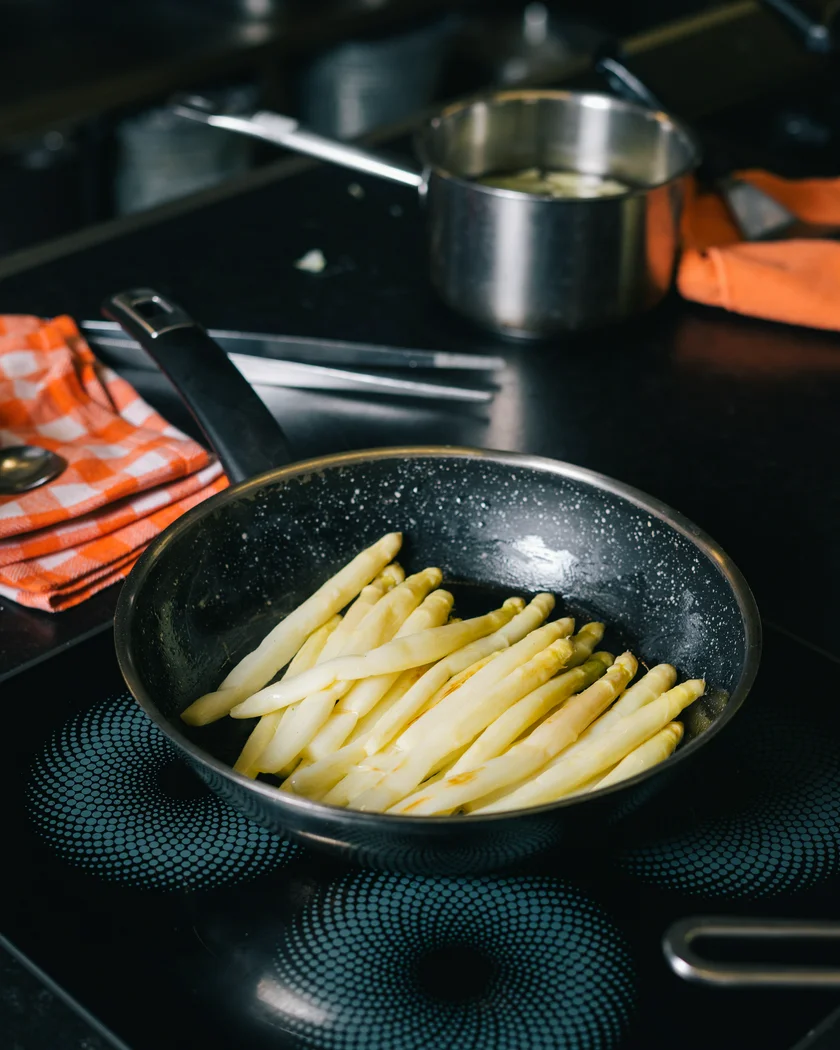
"After cutting, the asparagus quickly becomes bitter. White asparagus is particularly susceptible, so it has to be immersed in a water bath within two hours of picking and chilled at 3 degrees Celsius for 24 hours. This stops the bittering,” Šafář says.
The inedible parts are removed from the asparagus at the sorting plant, where it is also washed. The growers often use rainwater, which can be returned to the fields. "No worries. The asparagus husks have a disinfectant effect," Šafář says. “The unpleasant texture only sets in after two days."
Vegetables are sorted into different categories, not just by variety. The conveyor belt also includes a machine that takes pictures of each batch of asparagus and creates a database for buyers, where they can view and select the goods.
Asparagus mania all over the world
"Green asparagus is booming on the world market, taking up 60 percent of all fields here," says Šafář, noting that in London alone, as many green stalks are consumed every week as the total number produced in the Czech Republic in a whole year. "White asparagus is also coming back into the limelight, but there is still not as much interest in it. In Germany, the annual consumption is around 2.5 kilograms per person, while Czechs can only afford about 300 grams."
Eight varieties of asparagus are grown around Hostín, including the original purple variety, which comes from Asia and does not like the Czech climate very much, so it is not economically worthwhile for growers. “Don't confuse the purple variety with white stems that have turned purple due to sunlight," Šafář warns.
"There are many specially bred varieties on the planet, including purple or purple-green. It's not just about the color! Breeding is growing for taste, and in recent years the aim has been to make asparagus more resistant," he adds.
Although fresh asparagus is irreplaceable, the company is trying to find other ways to use and process the vegetable "waste," which makes up around 20 to 30 percent of the volume. "We send the trimmings back to the fields and sell the broken stems, the so-called ‘breakage', as a lower category for soups or purees," Šafář gives an example, enthusiastically opening a jar of white asparagus that was pickled in vinegar.
The "asparagus waste" is also used to make Chřestýš beer, brewed from the dried skins. There are plans to make use of green asparagus that is not suitable for sale. The heads could be ground into a pesto with olive oil, sunflower seeds, parmesan, and basil.
A well-deserved rest
The asparagus season lasts until the end of June. Over the summer, the plants are then allowed to grow freely until they have killed off all the weeds around them and hidden the rows under dense vegetation. This is chopped up with a tractor in the autumn and plowed into the soil as organic matter.
"The life span of asparagus in the fields at Hostín is exceptionally long because we farm on healthy soil that is hardly fertilized. Chemical fertilizers would seep through the sandy soil into the river and pollute the surrounding area," explains Jiří, who has opted for integrated production and is giving the fields time to rest. "After about seven years, the asparagus field is leveled to the ground to rest for another seven years and gain strength for the next stage," Šafář concludes our journey to find the raw material.
All about Czech asparagus
- Asparagus began to be planted in China 5,000 years ago and was originally used only as a medicinal herb. Only later it was cultivated in Rome and given the chance to prove its culinary merits.
- The official end of the asparagus season falls on June 24. In Germany, it is said that "Kirschen rot, Spargel tot," which means that as soon as the cherries turn red, the asparagus is over.
- Enjoy the asparagus harvest at its best! The stems must not be gnarled or rubbery and will naturally break in half when bent. They should be stored for a maximum of two or three days, preferably in the fridge, and wrapped in a damp (not wet!) cloth.
- White asparagus differs from green asparagus not only in its color and the way it is grown (without light) but also in its milder taste. In addition, the skin tends to taste bitter, so it must be scraped off thoroughly. In contrast, green asparagus is only washed. In both cases, however, the woody ends are removed. By the way, have you come across purple asparagus in the kitchen?
- Do not throw away the skins of white asparagus! Make a broth from them to use for soup or sauce. At the U Kalendů restaurant, they are used as an ingredient for asparagus cream. This is made out of finely chopped shallots with garlic, and a little white wine, which are first sautéed in butter, and then a batch of leftover asparagus trimmings is added. Cover with (meat or asparagus) stock and cook until soft. Finally, everything is blended, softened with cream, and finished with herbs.
- You can also incorporate the asparagus trimmings into an omelette or savoury pie. Similarly, save the salt water after cooking (blanching) the asparagus, as the stems release flavours that would be a shame not to use!
- Asparagus gets its great texture and flavor from poaching, for example in water with lemon juice and zest, butter, honey, and salt. A safe bet is grilling, but also baking in papillote, which means that the asparagus stalks are peeled or just cleaned and wrapped in baking paper with olive oil, sliced butter and sugar, lemon or lime juice, and herbs.
- Asparagus goes well with eggs, smoked fish, and cured ham (try lardo!), with baby leeks, cucumber, strawberries, spinach, and peas, but also with truffles, anchovies, mushrooms (morels), goat's cheese, and aged cheeses like parmesan.
- Pair it with sour cream, tahini, mustard, and a variety of sauces. Green and white asparagus deserve Hollandaise or Mornay sauce, green stalks are delicious with Romesco sauce, and white ones stand out in Bordelaise sauce.
- A great friend of asparagus is butter, both classic and herbal. Spring vegetables are also flavored with an interestingly sour koji butter or butter with miso paste, which is made out of 50 g miso in 100 g heated fat.
- Asparagus likes tanginess! Reach for citrus juice, apple cider vinegar, or vinaigrette towards the end of the preparation. As for herbs, invite basil, tarragon, chervil, or dill, and a handful of wild herbs into the mix. Seasoned breadcrumbs, puffed cereal, or toasted poppy seeds will spruce up asparagus dishes.
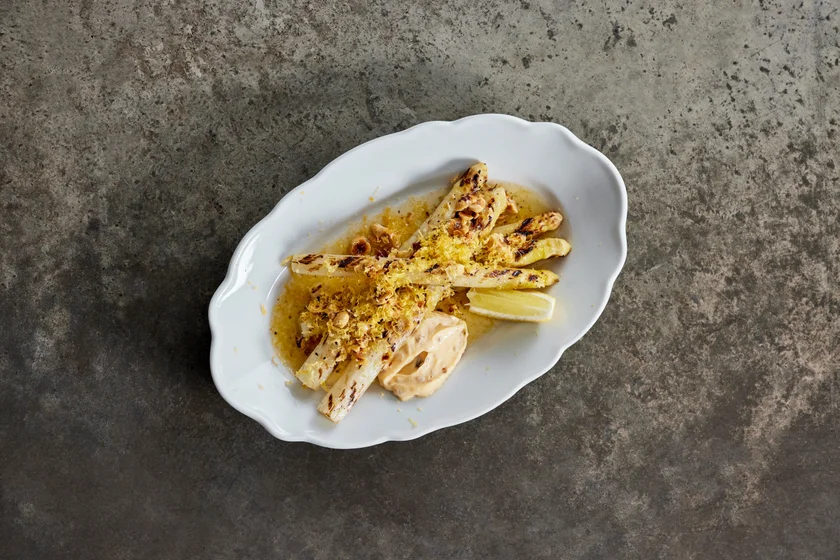
Appetizer recipe from U Kalendů: Grilled asparagus with aioli and brown butter
For 4 servings:
- 1 l broth (meat or vegetable)
- 200 ml whole milk
- 50 g butter
- a few sprigs of thyme
- 2 garlic cloves (peeled and crushed)
- tablespoon of sugar
- a pinch of salt
- 500 g white asparagus
For the dressing:
- 50 g browned butter
- salt and pepper
For the sauce:
- 200 g browned butter
- a pinch of salt and pepper
- zest of ½ lemon
- lemon juice to taste
- 40 g dry roasted hazelnuts
- 200 g browned butter
- a pinch of salt and pepper
- zest of ½ lemon
- lemon juice to taste
- 40 g dry roasted hazelnuts
For the mayonnaise aioli:
- 20 g black garlic
- 2 egg yolks (or 2 whole eggs)
- 300 to 400 ml of oil
- 20 ml wine vinegar
- a pinch of salt and pepper
to serve:
- 2 dried egg yolks
- 4 lemon wedges
Steps
- 1.Bring a liter of water to a boil with the stock, milk, and butter, and add the thyme and garlic, sugar, and salt.
- 2.Clean the asparagus of the skins, put it in the pot, and boil for two to three minutes - depending on the size of the stalks.
- 3.Remove the cooked stalks and cool them in a bowl with ice. This will keep the asparagus al dente.
- 4.Pat the stalks dry, brush with a dressing of melted brown butter, salt, and pepper, and grill or pan-fry on both sides.
- 5.Now it's time for the sauce. Just combine the melted brown butter with salt, pepper, grated lemon zest, and juice. Stir in the toasted and coarsely chopped hazelnuts.
- 6.Whisk the aioli: blend the black garlic to a paste, add the egg yolks (or whole eggs) and gradually whisk in the oil. Finish the mayonnaise with salt, pepper, and wine vinegar. Use both a blender and an hand blender to achieve the ideal creamy consistency.
- 7.Serve the grilled asparagus stalks drizzled with the sauce and topped with grated egg yolk, add a dollop of mayonnaise and a lemon wedge to the edge of the plate for acidity.
In the Czech Kitchen is a weekly column written in cooperation with the culinary experts from Ambiente. Established in 1995, the Prague-based collective of pubs, restaurants, and fine-dining outlets has transformed the Czech culinary landscape and lent to the widespread awareness of quality food service and production in Czechia. Follow their socials or book your table at www.ambi.cz.












 Reading time: 9 minutes
Reading time: 9 minutes 

